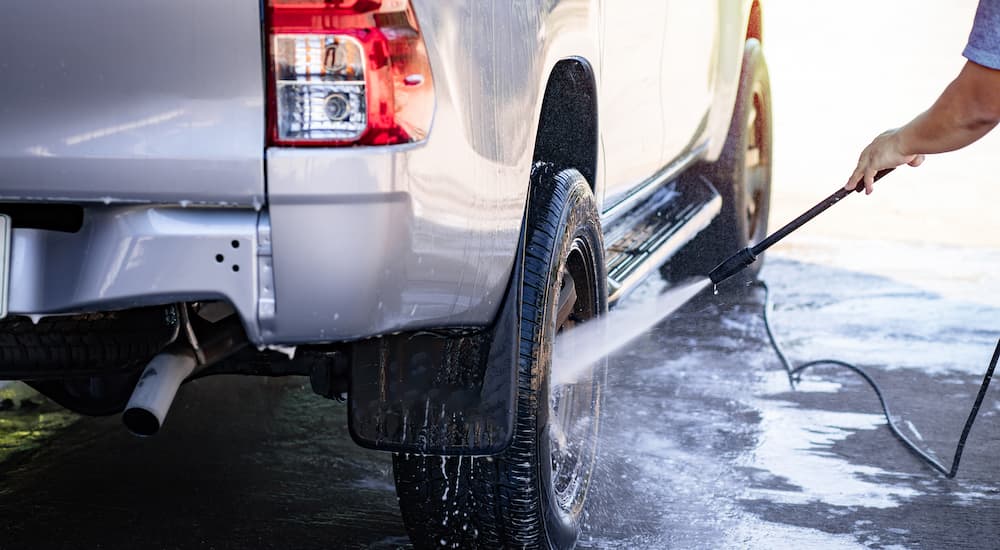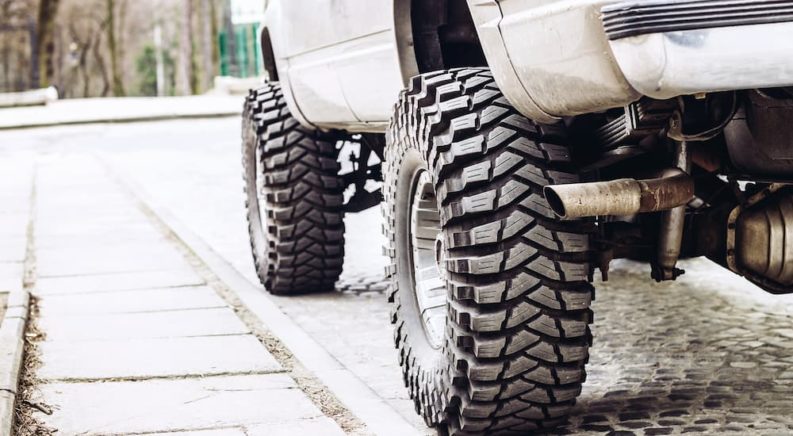A lifted truck is one of the best ways to explore the trails around where you live or even just to show off your rig on the road. To get an adventure-ready rig of your own, you can either visit a lifted truck dealer or you can install your own lift kit. While buying a lifted truck is the quickest and easiest way to tower over your surroundings, installing a lift kit yourself opens up even more options and can be more rewarding in the long run. However, if you decide to go down this route, there are plenty of potential pitfalls that you should be aware of. From choosing the right lift kit for your truck to installing it correctly, there are lots of dos and don’ts that you might not be aware of when you are just getting started.
Choosing a Lift You Can Install
Installing a lift kit correctly begins long before you break out wrenches and get to work. The single most important step is choosing the right kit. There are countless factors that go into getting the right lift kit for your needs, and those factors go beyond simply how much the kit costs and how it will change the performance and looks of your truck––it is just as important to consider how the kit needs to be installed. Sometimes seemingly more expensive and complicated options might be simpler when all is said and done, while the cheap and simple method turns out to be far more difficult to install.
For instance, a body lift is one of the cheapest types of lifts out there. Rather than messing around with replacing expensive suspension components, it simply uses small spacers placed between the body and the frame. However, in order to install a body lift, you will have to separate the body and the frame, which can end up being a complicated and lengthy process. You may even end up needing to modify various small parts in order to get everything to fit back together and work properly now that there is a larger gap between the body and the frame.
Probably the most important factor to consider when you plan on installing a lift kit yourself is how well you will be able to support the truck while you are working on it. Some types of kits are easy to install by just putting your truck up on jack stands one corner at a time as you upgrade the suspension components. However, others require you to be able to lift the entire truck to remove axles and other major components. If you don’t have access to a professional-style two-post lift, then consider just how much work you want to do on jack stands in your driveway before ordering a kit with a complex installation process.

The Best Time Is Now
Another important factor to take into account is your truck itself, particularly its age. Many project cars tend to be on the older side, but older trucks are always harder to work on. Rust makes everything more difficult, and older parts are more likely to need replacement. This means that if you are thinking about installing a lift kit at some point, don’t wait. While it may seem like a good idea to wait until your truck is out of warranty before making major changes, being able to work on a brand-new rust-free truck will make your job a lot easier. Even if you bought a used truck, the longer you wait, the more difficult the work will become.
It is also generally a good idea to lift your truck before making any other modifications to it. What type of lift you choose will define the character of your truck and help you make a lot of decisions about other mods down the road. This is particularly true when it comes to wheels and tires. While you might be tempted to install some affordable off-road wheels and tires as a placeholder while you wait to install your lift, going for the lift first will let you upgrade straight to the wheels and tires you want and save you money in the long run. It will also help you realize if you need quality of life upgrades like side steps or running boards that you might not have considered before driving a lifted truck.
Plan the Installation and Gather Your Tools
It’s impossible to ever anticipate everything you will need when working on your truck. However, planning ahead will make the process much easier. Figuring out all the tools and parts you will need before you disassemble your truck will make the process go much more smoothly. Take some time to watch YouTube videos from people who have installed similar lift kits on the same type of vehicle and see if you can learn any tips and tricks. If possible, enlist a friend who has installed a lift kit before and can help walk you through the process. Having a second set of hands can make things go quicker even if they don’t know anything more about lifting a truck than you do.
You will also want to prep your truck before working on it. Start blasting the nuts and bolts you will be working on with penetrating fluid several days before starting work. This will loosen them up and reduce frustration as you install your lift kit. Don’t forget to give your truck a good wash as well. Working underneath a muddy truck only makes the job more difficult and less fun, so make sure to clean the suspension and underbody first. While you may be tempted to dive into the job the moment your lift kit arrives, this sort of simple prep and planning will make the installation go much faster and eliminate some of the frustration that always comes from working on a truck.

The Job Doesn’t End With Installation
When the last part is installed, and the last bolt tightened, you are likely happy to call it a day and crack open a beer. However, your job isn’t done yet. Any suspension work needs to be followed by an alignment, and the odds are that your alignment will be badly off after installing a lift kit. It’s a good idea to do a simple DIY alignment on your own to make sure your truck is close enough to spec to safely drive it to a shop for a professional alignment. However, depending on the size of your lift, you may need to find an experienced shop that specializes in working on lifted vehicles to get the perfect alignment. Many common alignment places aren’t equipped to handle the largest lifts, and factory alignment specs don’t always work right for a lifted truck.
You should also monitor your newly lifted truck, paying special attention to any parts you replaced. Ensure that everything is working correctly, that none of the modified suspension components are rubbing against anything as you drive, and that everything is tightened down properly. Your suspension takes a lot of abuse even if you don’t head off-road regularly, and you want to catch any problems before they develop into serious issues. One helpful tip here is to mark all the bolts with a paint pen so that you can make sure nothing is coming loose without having to check everything with a torque wrench.
Have Fun in a Lifted Truck!
While the process of lifting your truck may make you wonder why you didn’t just swing by your nearest lifted truck dealer, the end result is well worth it. Nothing beats driving around in a rig you put together with your own hands to your own specs, and you can be sure there is nothing else like it on the roads or on the trails. Although there are plenty of potential pitfalls when it comes to lifting a truck, a little planning will help you avoid most of them, even if it is your first time installing a lift kit. So take your time getting ready, and you will soon be behind the wheel of a rig that will leave everyone in awe.

